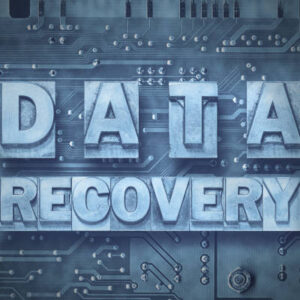Download the Business Owner's Cybersecurity Blueprint

100% Free & Secure - We will never sell your information.

No one can tell when a disaster is going to strike or what form that disaster is going to take. The cause could be a storm, human error, or some freak occurrence that nobody could have seen coming. In order to get back up and running after one of these incidents a company needs to have a strong business continuity strategy. An essential part of this strategy is knowing how to recover data depending on the way it’s lost. Getting data back and working for your company is the only way to stave off ruin, so let’s look at data recovery strategies that can literally save your business.
Your business’ data has a certain value to you, and depending on whose data it is, to your clients, vendors, employees, and whomever else trusts you enough to share their personal data with you. At any rate, any data loss is a big deal; and, today has become a large field of study called infonomics. Infonomics can put an actual dollar value on the data your organization has on hand and uses some very poignant questions to do so. These questions include:
These questions will go a long way toward making you understand exactly what kind of data you need to protect in order to keep your business from suffering some of the negative circumstances brought on by data loss. Let’s take a look at some concepts you need to understand if you are going to successfully protect your organization’s data.
The first is one of the most obvious. In order to keep data from being lost, many organizations roll out comprehensive data backup systems that take snapshots of data as it changes. This provides an extraordinarily useful tool for network administrators to have if the data is corrupted or has been lost or damaged somehow.
At Reciprocal Technologies, we offer a backup and disaster recovery service that features incremental back ups that are stored both locally in a network-attached device, and offsite in a secure data center. The total data redundancy ensures that you will always have access to the data you need, when you need it.
The disaster recovery part of the BDR is not to be taken lightly. For data recovery, you make contingencies for situations and hope that you never have to use them. The two main factors in a disaster recovery platform are:
The shorter the duration on RPO and RTO, the more diligent you have to be in keeping data at the ready for recovery. In managing your organizational expectations in regard to business continuity, it is essential that any strategy has succinctly taken into account the disaster recovery metrics. These will always dictate how you need to approach data recovery.
At Reciprocal Technologies, we take data redundancy extremely seriously, and would like to help your organization set up a backup and disaster recovery platform that works to protect your business’ most important asset: its data. For more information call the IT professionals at 317-759-3972 today.
Author’s recent posts
